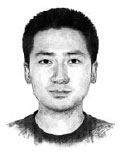Moving tales from my migrant beat

The sheer scale and radical nature of transformations in China in the past century suggest that very few could claim not to be migrants of one sort or another.
Jiguan (the place of one's ancestors' birth or origin), for example, has been used to describe the place of one's origin. But it is often irrelevant today, as many people's jiguan are not where they are from. I have never been to my jiguan in eastern Jiangsu province. I was born in southwestern Chongqing municipality, raised in northeastern Jilin province, and have a Beijing hukou (registered permanent residence).
Statistically referred to as the "floating population" - people who live over a prolonged period in places other than where their hukou is registered - migrant workers in China are the evolving products of highly complex socioeconomic dynamics.
The term "migrant worker" is often, if not almost, interchangeable with "rural migrant worker", because a vast majority of the 260 million migrant workers are people with a rural hukou struggling to make a living in the cities.
They were the mangliu (blind-floating population) of the pre-reform era, the mingong (farmer workers) of the 1980s and 1990s, and the nongmin gong (rural migrant workers) of this decade.
The shift implies their gradual formation as a collective and indicates the extent of progress made in clearing their names and improving their lives.
But challenges, which stem from both market factors and pre-reform measures to curb rural migration (that is, the hukou system), are mammoth.
Rural migrant workers are encouraged to work in the cities, but not live in them - at least not with the same rights as urban residents.
Since 2003, the central government has taken bold measures to help rural migrant workers integrate into cities. But, as the number of migrant workers hits a record-high 260 million, and when a newer, more self-conscious generation of rural migrant workers has become the most active labor force, there are reasons to be cautious.
If this historic process happens to be concurrent with a deterioration in the living conditions of these young people, rapid urbanization, structural labor shortages and a national economy begging to transform its reliance on cheap labor and manufacturing exports in an increasingly uncertain global market, then the most urgent question is getting the job - offering equal opportunities to them and public services for all - done as soon as possible.
This, incidentally, has been a focus of China Daily. Over the decades, the newspaper's coverage of rural migrant workers has expanded in scale, scope and quality. The reports have grown from mere mentions of migrant workers as a term to down-to-earth, real-life people stories, objective news analyses and thorough, investigative pieces that have an impact on society.
Migrant workers were, at one point, my primary beat. To this day, many of my contacts are still rural migrant workers, whose life stories are far more fruitful than the most creative writer can ever imagine.
The intricate nature of their experiences serves as a constant reminder of the vast complexities of this land, of how little we know, how little we'll ever find out, and of how humble we must be as, not just journalists, but human beings.
Hu Yinan is a journalist with China Daily.
(China Daily 06/01/2011 page13)














